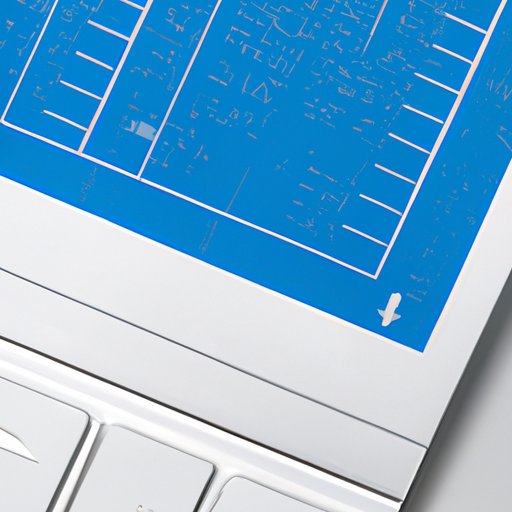
I. Introduction
Have you ever seen something on your computer screen that you wish you could save or share? A screenshot, also known as a screen capture, allows you to do just that. A screenshot is a digital image of your computer screen or a portion of it. It’s a useful tool for capturing everything from error messages to funny memes. In this article, we will cover different methods for taking screenshots on Windows, which is the most widely used operating system in the world.
II. Step-by-Step Guide
For beginners, the most straightforward method for taking a screenshot is using the Snipping Tool or the Print Screen key.
To access the Snipping Tool, search for it in the Windows Start menu or use the search bar in the taskbar. Once you open the Snipping Tool, you can choose to take a full-screen screenshot or select a specific area with your mouse cursor. After you’ve taken the screenshot, simply save it as an image file on your computer and view it in your preferred image viewer software.
If you prefer to use the Print Screen key, simply press the button labeled “PrtScn” or “Print Screen” on your keyboard. This will capture a screenshot of your entire screen and stores it in your clipboard. You can then paste it into an image editing software or document file, such as Microsoft Word, to save and view the screenshot.
III. Shortcut/Hotkey Method
If you’re looking for a faster way to take screenshots, Windows has several shortcut keys that can be used to capture screenshots. Here are the most commonly used shortcut keys:
- Windows key + PrtScn: This captures a full-screen screenshot and saves it in the default screenshot folder on your computer.
- Windows key + Shift + S: This opens the Snipping Tool, allowing you to select a specific area to capture.
- Alt + PrtScn: This captures only the active window and stores it in your clipboard.
These shortcut keys offer greater flexibility in capturing specific images and can save you time in the long run.
IV. Third-Party Applications
For users who want more functionality from their screenshot taking tool, third-party applications are a great option. Here are the top 5-10 screenshot apps for Windows:
- Lightshot
- Greenshot
- Snagit
- PicPick
- TinyTake
- ShareX
- CaptureOne Pro
- FastStone Capture
- Screenpresso
- Open Broadcaster Software (OBS)
Each app has its unique features and user experience. For example, Lightshot allows you to edit your screenshots with annotations, while Snagit provides advanced video capture and editing tools. Before selecting a third-party application, consider which features are the most important to you.
V. Specific Use Cases
Finally, let’s explore specific use cases where capturing screenshots may vary. Here are some scenarios where you want to capture screenshots:
- Gaming: Windows Game Bar is a built-in feature for Windows 10 users that allows you to capture in-game screenshots or video recordings. You can open the Game Bar by pressing the Windows key + G.
- Work: Microsoft Office provides its own screenshot tool called “Screen Clipping.” You can access it in Word, Excel, or PowerPoint by clicking on the “Insert” tab and selecting “Screenshot” from the toolbar.
Before taking a screenshot in any of these specific cases, make sure you understand which tools and methods are best suited for your needs.
VI. Video Tutorial
If you prefer watching video tutorials to learn new skills, we’ve got you covered. Check out this comprehensive video tutorial on how to take screenshots on Windows:
https://www.youtube.com/watch?v=Q0lH_xLXz4o
VII. Conclusion
Taking a screenshot is a useful skill whether you’re working, gaming, or for personal use. In this article, we’ve covered different methods for taking screenshots on Windows, from the most straightforward methods to advanced third-party applications. We also explored specific scenarios where capturing screenshots may vary and provided a video tutorial for those who prefer watching. Regardless of the method you choose, make sure you practice taking screenshots regularly to refine your skills.





